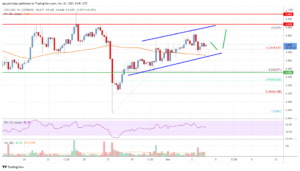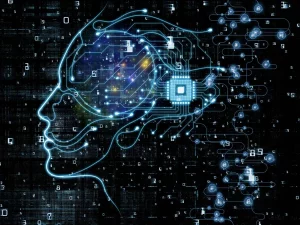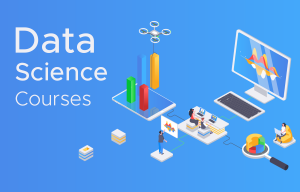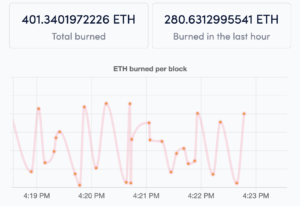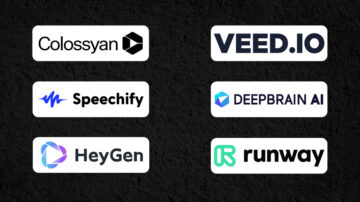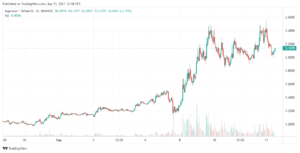Introduction
Python, a versatile and powerful programming language, serves as an excellent starting point for beginners and seasoned developers alike. Known for its simplicity and readability, Python allows you to express ideas in fewer lines of code compared to other languages. Whether you’re creating web applications, analyzing data, or diving into artificial intelligence, Python’s straightforward syntax makes it an ideal choice. With a vast community and extensive library support, Python offers a welcoming environment for those eager to explore programming. Let us dive deeper to learn about Python 2 and Python 3.
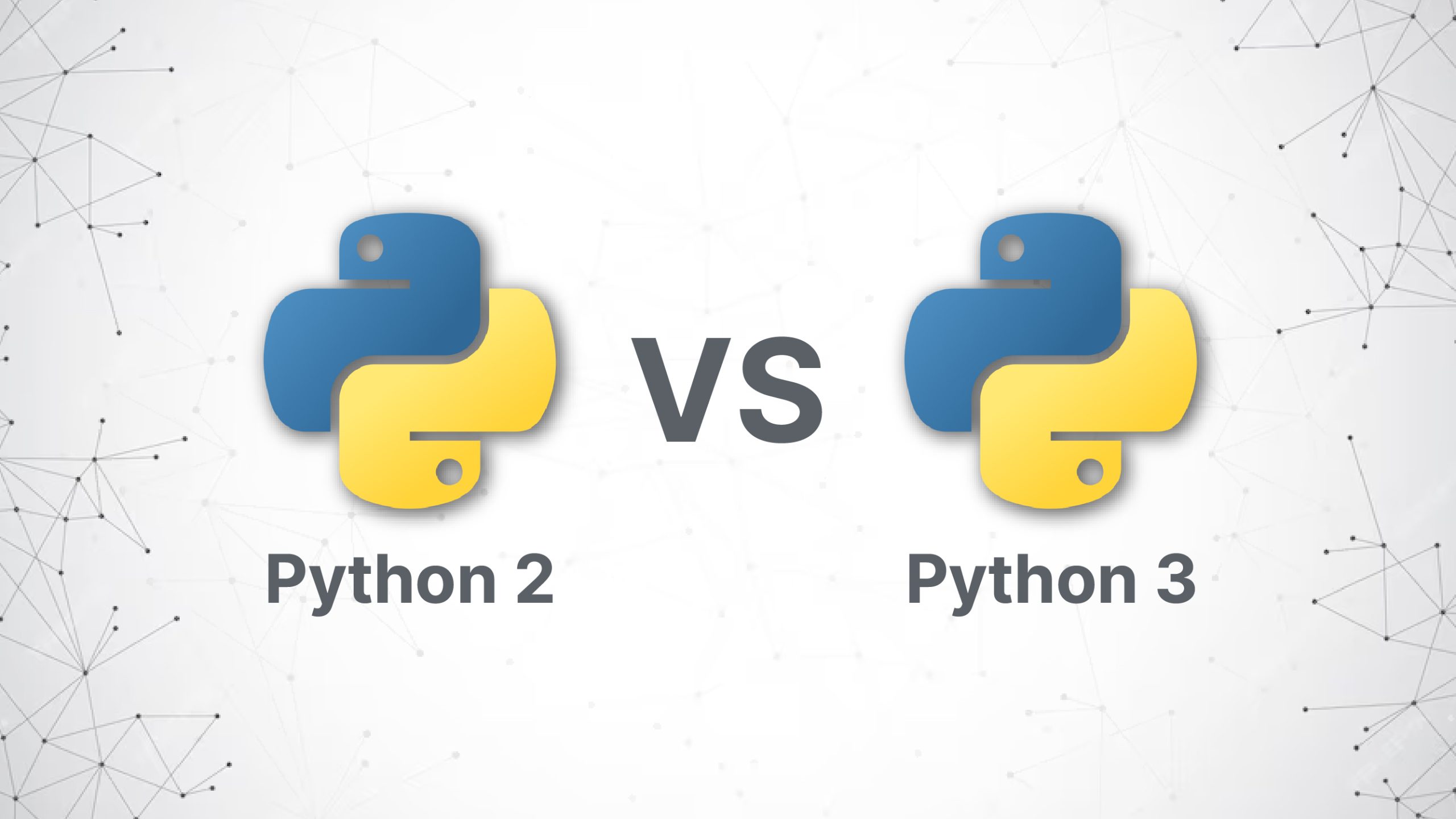
Learn Introduction to Python Programming. Click here.
Python, the programming language, has two main versions: Python 2 and Python 3. They’re like different editions of a book. Even though they’re both Python, they have some important differences. People used to argue a lot about which one is better to use. It’s like choosing between two flavors of ice cream. Some folks prefer one, some like the other. Let’s explore the key distinctions between Python 2 and Python 3 in a simple way.
What is Python 2?
Python 2.0 came into the tech scene in 2000. It was made by the BeOpen Python Labs team to make programming easy and simple for everyone to learn. It’s like a friendly guide introduced in the world of tech to make things more understandable for everyone.
Python 2 is an older version of the Python programming language. It’s like the earlier model of your favorite phone. It was widely used for a long time, but now there’s a newer and improved version, Python 3. Think of it as an older version of your favorite game – it served its purpose, but it’s time to upgrade for better features and support.
Python 2 did a good job by adding some tech improvements called Python Enhancement Proposal (PEP). But when Python 3 came out, people didn’t use Python 2 as much. In 2020, Python 2’s story wrapped up with version 2.7. It’s like waving farewell to an old buddy who did great things but had to step aside for something even better.
Here’s a timeline showcasing the release dates of various versions in the Python 2.X series:
- Python 2.0 – October 16, 2000
- Python 2.1 – April 17, 2001
- Python 2.2 – December 21, 2001
- Python 2.3 – July 29, 2003
- Python 2.4 – November 30, 2004
- Python 2.5 – September 19, 2006
- Python 2.6 – October 1, 2008
- Python 2.7 – July 3, 2010
What is Python 3?
Python 3 is like the newer, improved version of Python, the programming language. It’s similar to getting an upgraded model of your favorite phone. Python 3 was designed to fix some things and make programming even better. Think of it as a fresh and more user-friendly approach to coding, like a tech-savvy friend helping you out with the latest and coolest features.
In 2008, Python 3 came out, not just as a fixed-up version of Python 2. The idea was to make coding better by getting rid of repetitive stuff, like writing the same code over and over. Python 3 is a bit different from Python 2, and the goal is to make it easier for new programmers. It’s like giving beginners a smoother ride into the world of programming.
Here’s a timeline showcasing the release dates of various versions in the Python 3.X series:
- Python 3.0 – December 3, 2008
- Python 3.1 – June 27, 2009
- Python 3.2 – February 20, 2011
- Python 3.3 – September 29, 2012
- Python 3.4 – March 16, 2014
- Python 3.5 – September 13, 2015
- Python 3.6 – October 2016
- Python 3.7 – June 2018
Join our complimentary Python course to deepen your understanding.
Difference Between Python 2 and 3
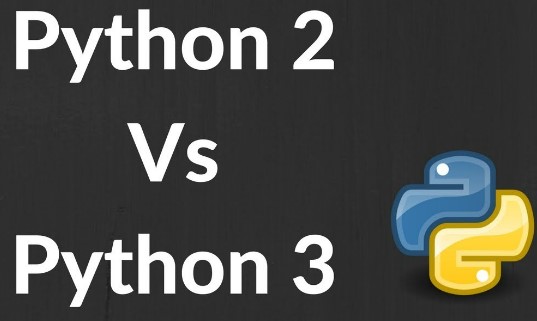
| Year of Release | Python 2 was released in the year 2000. | Python 3 was released in the year 2008. |
| Print Statement | Uses print as a statement, like print “Hello” | Uses print() as a function, like print(“Hello”) |
| Division | Performs integer division by default, for example, 5 / 2 results in 2. | Performs true division by default, for example, 5 / 2 results in 2.5 |
| Unicode Support | Strings are ASCII by default; Unicode requires the u prefix. | Strings are Unicode by default; use b prefix for bytes. |
| Range Function | range() returns a list; xrange() returns an iterator. | range() returns an iterator; xrange() is no longer available |
| Input Function | Uses raw_input() to get user input. | Uses input() for the same purpose. |
| Iterating | dict.items(), dict.keys(), and dict.values() return lists. | These methods return views, and you need to use list(dict.items()) to get a list. |
| Byte Type | Has a str type for ASCII and a separate unicode type for Unicode. | Has a bytes type for ASCII and a str type for Unicode. |
| Boolean Operations | True and False are not keywords | True and False are keywords |
| File Handling | Uses open(file, mode). | Uses open(file, mode, encoding=’utf-8′). |
| Ease of Syntax | Python 2 has a more complex way of writing code than Python 3. | Python 3 has an easier syntax compared to Python 2. |
| Present Usage | Python 2 is no longer in use since 2020. | Python 3 still in use. |
| Libraries | Many Python 2 libraries don’t work with newer versions of the language. | Many libraries are made for Python 3 and meant specifically for use with Python 3. |
| Application | Python 2 was commonly used for becoming a DevOps Engineer, but it’s no longer in use after 2020. | Python 3 finds applications in different areas such as Software Engineering and Data Science. |
| Backward compatibility | Porting Python 2 codes to Python 3 requires significant effort. | Python 3 does not work seamlessly with Python 2 in terms of backward compatibility. |
Comparison of Python 2 and Python 3 with Example Code
Now that we know the differences between Python 2 and Python 3, let’s see examples of code in both versions
Example 1: Print Statement
Python 2:
# Python 2
print "Hello, Python 2!"
Python 3:
# Python 3
print("Hello, Python 3!")In Python 2, print is a statement and doesn’t require parentheses. In Python 3, print is a function and needs parentheses.
Example 2: Division
Python 2:
# Python 2 result = 5 / 2 print(result) # Outputs 2Python 3:
# Python 3 result = 5 / 2 print(result) # Outputs 2.5In Python 2, division of integers results in floor division by default. Python 3 performs true division by default.
Example 3: Input Function
Python 2:
# Python 2
user_input = raw_input("Enter something: ")
print("You entered: " + user_input)Python 3:
# Python 3
user_input = input("Enter something: ")
print("You entered: " + user_input)In Python 3, raw_input() is merged into the input() function.
These examples showcase some fundamental differences, and adapting code accordingly is crucial when transitioning from Python 2 to Python 3.
Example 4: Unicode Handling
Python 2:
# Python 2
unicode_string = u"Hello, Unicode!"
print(unicode_string)Python 3:
# Python 3
unicode_string = "Hello, Unicode!"
print(unicode_string)In Python 2, Unicode strings require the u prefix, while in Python 3, strings are Unicode by default.
Example 5: Range Function
Python 2:
# Python 2
for i in range(5): print(i)Python 3:
# Python 3
for i in range(5):
print(i)In Python 3, range() behaves like xrange() in Python 2, providing an iterator instead of a list.
Example 6: Error Handling Syntax
Python 2:
# Python 2
try:
# Some code that might raise an exception
result = 10 / 0
except Exception, e:
print("Error: " + str(e))Python 3:
# Python 3
try:
# Some code that might raise an exception
result = 10 / 0
except Exception as e:
print("Error: " + str(e))In Python 3, the syntax for handling exceptions has changed from except Exception, e: to except Exception as e:.
Python 2 or 3: Which Python Version is Best?
Choosing between Python 2 and Python 3 depends on your needs. If you’re starting fresh, Python 3 is the way to go as it’s the current and future version. It comes with improvements and support for modern features.
However, if you have existing projects in Python 2, consider migrating to Python 3 since Python 2 is no longer officially supported. It’s like getting the latest model of your favorite device – newer, more features, and better support.
In a nutshell, for new projects or if you can, shift to Python 3. It’s like using the upgraded version of a tool – more efficient and in line with the latest developments.
let’s delve a bit deeper:
Python 3 Advantages:
- Long-term Support: Python 3 is the current and future focus of development, ensuring ongoing support, updates, and community contributions.
- Improved Features: Python 3 introduces enhancements and new features, making it more powerful and efficient than Python 2.
- Unicode by Default: Python 3 handles text and strings more consistently, making Unicode support a default feature.
- Ecosystem Growth: Many new libraries and tools are developed primarily for Python 3, ensuring compatibility with the latest technologies.
Considerations for Transitioning:
- Existing Projects: If you have legacy projects in Python 2, migrating to Python 3 is recommended for continued support and security.
- Community Support: The Python community actively encourages the use of Python 3, providing resources and assistance for the transition.
- Compatibility Tools: Tools like 2to3 can assist in converting Python 2 code to Python 3, easing the migration process.
In essence, while Python 2 has served well, Python 3 offers a more robust and future-proof platform. It’s akin to upgrading to the latest edition of a tool – embracing improvements, modern practices, and an ever-growing community.
Conclusion
In conclusion, choosing between Python 2 andPython3 is like deciding between an old favorite and a shiny new upgrade. If you’re starting fresh, go for Python 3; it’s like picking the latest gadget with all the cool features. For existing projects, consider the move to Python 3 as it’s the present and future favorite – more support, better features, and in tune with the latest tech trends. Embracing Python 3 is like saying goodbye to an old reliable friend, but it’s also saying hello to a smarter, more capable companion in your coding journey.
In essence, the difference is not just in syntax or functionalities; it’s a journey from the past to the future, from what was good to what is even better. So, whether you’re starting anew or transitioning, remember, Python 3 is not just an upgrade – it’s an investment in the continued vitality of your coding endeavors.
You can also refer to these articles to know more:
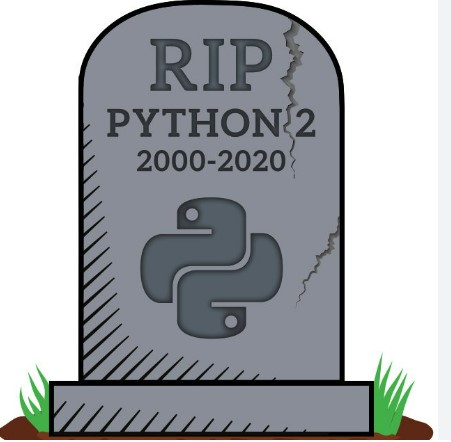
Frequently Asked Questions
Q.1: Which is faster: Python 2 or 3?
A: Generally, the performance difference between Python 2 and 3 is minimal. However, Python 3 has optimizations and improvements that can make it slightly faster for certain operations.
A: Yes, you can install both Python 2 and 3 on your system. They can coexist without interference. Python 2 usually installs as python and Python 3 as python3 to avoid conflicts.
A: No, Python 3 is a newer version of the Python programming language. When people refer to “Python,” they might mean Python 2 or Python 3. It’s essential to specify the version.
A: Yes, Python 3 is commonly implemented as CPython, the reference implementation of the Python language. CPython is written in C and is the most widely used implementation.
A: Yes, it is possible to use Python 2 and 3 on the same system. However, they are distinct and have some incompatibilities. Be cautious when working with projects that use different Python versions to avoid conflicts.
Related
- SEO Powered Content & PR Distribution. Get Amplified Today.
- PlatoData.Network Vertical Generative Ai. Empower Yourself. Access Here.
- PlatoAiStream. Web3 Intelligence. Knowledge Amplified. Access Here.
- PlatoESG. Carbon, CleanTech, Energy, Environment, Solar, Waste Management. Access Here.
- PlatoHealth. Biotech and Clinical Trials Intelligence. Access Here.
- Source: https://www.analyticsvidhya.com/blog/2024/01/what-is-the-difference-between-python-2-and-python-3/
- :has
- :is
- :not
- $UP
- 1
- 10
- 11
- 13
- 16
- 17
- 19
- 20
- 2000
- 2008
- 2020
- 27
- 29
- 30
- 321
- 7
- 8
- 9
- a
- About
- accordingly
- actively
- adapting
- adding
- advantages
- After
- alike
- All
- allows
- also
- an
- analyzing
- and
- applications
- approach
- April
- ARE
- areas
- argue
- articles
- artificial
- artificial intelligence
- AS
- aside
- asked
- assist
- Assistance
- avoid
- b
- BE
- becoming
- Beginners
- BEST
- Better
- between
- Bit
- book
- both
- but
- by
- called
- came
- CAN
- capable
- cautious
- certain
- changed
- choice
- choosing
- click
- code
- Codes
- Coding
- coexist
- comes
- commonly
- community
- companion
- compared
- compatibility
- complex
- complimentary
- conclusion
- conflicts
- Consider
- consistently
- continued
- contributions
- converting
- Cool
- Cream
- Creating
- crucial
- Current
- data
- data science
- Dates
- December
- Deciding
- Deepen
- deeper
- Default
- delve
- depends
- designed
- developed
- developers
- Development
- developments
- device
- DevOps
- DICT
- DID
- difference
- differences
- different
- distinct
- dive
- diving
- Division
- does
- Doesn’t
- Dont
- e
- eager
- Earlier
- easier
- easing
- easy
- edition
- editions
- efficient
- effort
- embracing
- encourages
- endeavors
- engineer
- Engineering
- enhancement
- enhancements
- ensuring
- Enter
- entered
- Environment
- error
- essence
- essential
- Ether (ETH)
- Even
- ever-growing
- everyone
- example
- examples
- excellent
- Except
- exception
- existing
- explore
- express
- extensive
- false
- farewell
- faster
- Favorite
- Feature
- Features
- February
- fewer
- File
- finds
- Fix
- Floor
- Focus
- For
- fresh
- friend
- friendly
- from
- function
- functionalities
- fundamental
- future
- game
- generally
- get
- getting
- Giving
- Go
- goal
- good
- good job
- great
- Growth
- guide
- had
- Handles
- Handling
- Have
- helping
- High
- However
- HTTPS
- i
- ICE
- ice cream
- idea
- ideal
- ideas
- if
- implementation
- implemented
- important
- improved
- improvements
- in
- incompatibilities
- input
- install
- instead
- Intelligence
- interference
- into
- introduced
- Introduces
- Introduction
- investment
- IT
- ITS
- Job
- journey
- jpg
- July
- june
- just
- Key
- Know
- known
- Labs
- language
- Languages
- latest
- latest developments
- LEARN
- Legacy
- let
- libraries
- Library
- like
- Line
- lines
- List
- Lists
- Long
- long time
- longer
- Lot
- made
- Main
- make
- MAKES
- Making
- many
- March
- max-width
- mean
- meant
- methods
- might
- migrating
- migration
- minimal
- Mode
- model
- Modern
- more
- more efficient
- most
- move
- much
- Need
- needs
- New
- New Features
- newer
- no
- November
- now
- Nutshell
- october
- of
- Offers
- Officially
- Old
- older
- on
- ONE
- ongoing
- Operations
- or
- Other
- our
- out
- outputs
- over
- past
- People
- performance
- performs
- phone
- picking
- platform
- plato
- Plato Data Intelligence
- PlatoData
- Point
- possible
- powerful
- practices
- prefer
- present
- primarily
- process
- Programmers
- Programming
- projects
- proposal
- providing
- purpose
- Python
- raise
- range
- recommended
- refer
- reference
- release
- released
- reliable
- remember
- repetitive
- require
- requires
- Resources
- result
- Results
- return
- returns
- Rid
- Ride
- robust
- same
- saying
- scene
- Science
- seamlessly
- seasoned
- security
- see
- separate
- September
- September 19
- Series
- served
- serves
- shift
- showcase
- showcasing
- significant
- similar
- Simple
- simplicity
- since
- smarter
- smoother
- So
- Software
- software engineering
- some
- something
- specifically
- Starting
- Statement
- Step
- Still
- Story
- straightforward
- such
- support
- Supported
- syntax
- system
- table
- team
- tech
- Technologies
- terms
- text
- than
- that
- The
- The Future
- the world
- These
- they
- things
- Think
- those
- though?
- time
- timeline
- to
- together
- tool
- tools
- transition
- transitioning
- Trends
- true
- try
- tune
- two
- type
- understandable
- understanding
- unicode
- Updates
- upgrade
- upgraded
- us
- use
- used
- User
- user-friendly
- using
- usually
- various
- Vast
- versatile
- version
- versions
- views
- vitality
- vs
- was
- Way..
- we
- web
- web applications
- welcoming
- WELL
- What
- What is
- when
- whether
- which
- while
- WHO
- widely
- with
- without
- Work
- working
- world
- Wrapped
- writing
- written
- X
- year
- yes
- you
- Your
- zephyrnet

